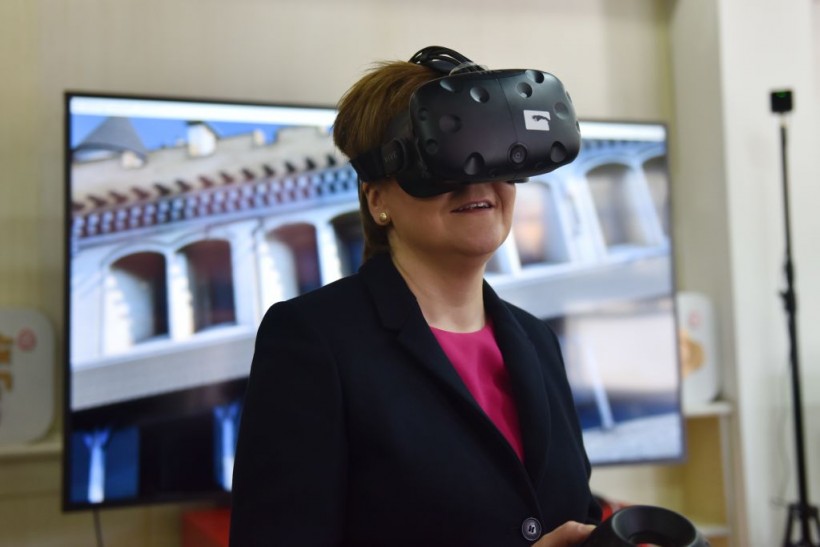To track brain activity during interactions, University of Texas at Austin researchers customized a commercial VR headgear.
The noninvasive electroencephalogram (EEG) sensor in the Meta VR headset has potential uses in reducing anxiety and enhancing human-robot interactions.
By revealing how the brain responds to outside stimuli and perhaps improving VR experiences, this ground-breaking technology has the potential to transform whole industries.

(Photo: GREG BAKER/AFP via Getty Images) Scotland's First Minister Nicola Sturgeon tries out a virtual reality headset during a demonstration of a conservation partnership between the Palace Museum and Historic Environment Scotland, at the Forbidden City, the former home of China's emperors, in Beijing on April 10, 2018.
Previous Restrictions
It was awkward and difficult to connect traditional EEG equipment with electrode caps with VR headsets. To enhance user experience, researchers created spongy electrodes utilizing soft, conductive materials.
These electrodes, together with a flexible circuit with conductive traces and an EEG recording device at the rear, were placed into the headset's top strap and forehead pad.
Read Also: VR Headset with Mouth Haptics Attach to Device-Will It be Available Built-In?
Introduction of EEGs
Modern EEG sensors have transformed VR technology, opening up possible uses for it in the treatment of anxiety disorders and training for pilots.
Clinicians can design specialized therapy strategies by closely observing patients' brain activity while they engage in virtual reality experiences.
Additionally, VR headsets can assess the degree of stress and concentration that pilots are under while boosting safety during flight operations.
Physical Testing
A driving simulation game that lets players respond to turn orders and record their brain activity was developed by researchers using VR EEG headsets.
This experiment shows how the technology may be used to gauge cognitive involvement and attention during interactive activities.
Future Possibilities for VR
For VR EEG technology, researchers have submitted preliminary patent paperwork, and their openness to working with VR firms to develop built-in versions suggests a readiness to make it broadly available.
The VR business might undergo a revolution thanks to this technology, which would also improve consumer security.
Related Article: VR-Based Mental Wellness Platform Powered by Oxford University's Oxford VR is Launched










